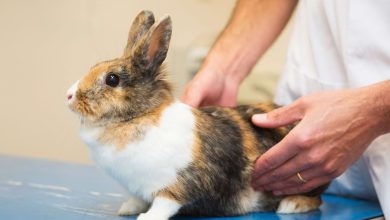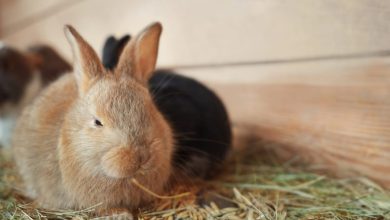Learn All About Their Unique Needs
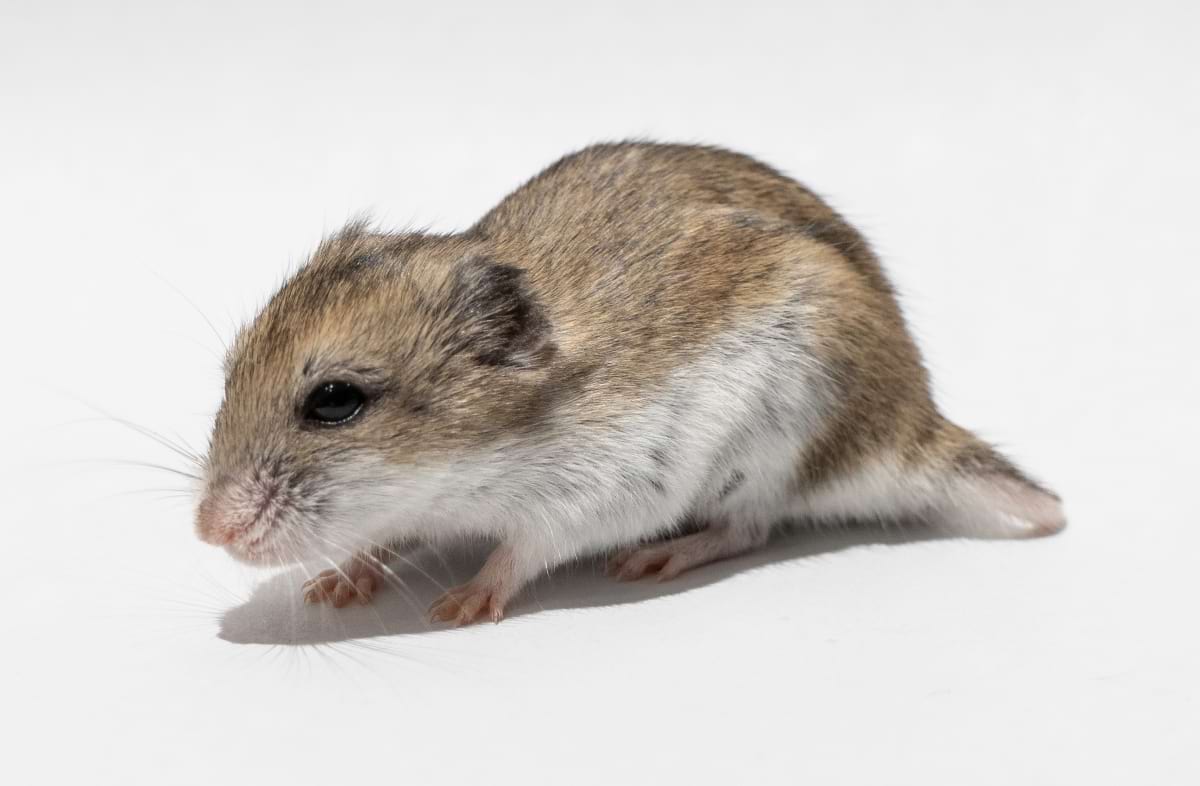
If you’re curious about Chinese dwarf hamsters, you’re in for a treat! These adorable little pets are known for their small size and unique characteristics that make them a popular choice for many animal lovers. In the world of hamsters, the Chinese hamster, also known as the “striped-back” hamster, stands out thanks to their distinctive appearance.
With their gentle nature and docile personalities, they have become increasingly popular as pets around the world. So, if you’re considering adding a Chinese hamster to your family, keep reading to learn everything you need about this unique species and its needs!
Are Chinese Hamsters Dwarf?
When pet owners talk about dwarf hamsters, they commonly refer to those from the Phodopus genus, which includes Roborovski, Winter White, and Campbell’s (and Russian hybrids). However, Chinese hamsters are a bit different. They are members of the Cricetulus genus and are called ratlike hamsters due to their similarities to rats.
There’s some debate among hamster enthusiasts about whether Chinese hamsters are dwarfs. Some claim that, technically speaking, Chinese hamsters are the only real dwarfs, while Roborovski, Winter White, and Campbell’s hamsters are referred to as just “small” in scientific contexts.
However, in scientific literature, mostly the Phodopus hamsters are called dwarfs. Occasionally, Chinese hamsters are also referred to as “dwarfs.”
Size-wise, Chinese hamsters are indeed smaller than their popular cousin, the Syrian hamster. However, they’re slightly larger than the hamsters most people consider to be dwarfs. So, while they might not be called “true” dwarf hamsters in the strictest sense, they are certainly on the smaller end of the hamster size spectrum.
Where Do Chinese Hamsters Come From
Chinese hamsters, which are often referred to as Chinese dwarf hamsters and Chinese striped hamsters, originate from the steppe and semi-desert areas of northern China and Mongolia. You might find them in various types of habitats, such as grasslands, shrublands, farmlands, and the desert.
In the wild, your Chinese hamster’s ancestors would roam the grassy steppes of China and Mongolia, where they adapted to blend in with their surroundings. Their small size and agility allowed them to navigate the many hiding spots in the vegetation and quickly escape predators.
These hamsters have also been known to reside in agricultural areas and the outskirts of human settlements. As a result, they often encounter wheat and other crops, which have now become an essential part of their diet in captivity.
As creatures of the desert, Chinese hamsters are well-adapted to the arid environment, with water conservation a key characteristic. Their kidneys are designed to help them withstand low levels of water intake, making them perfect for living in a dry, challenging climate.
Size & Appearance
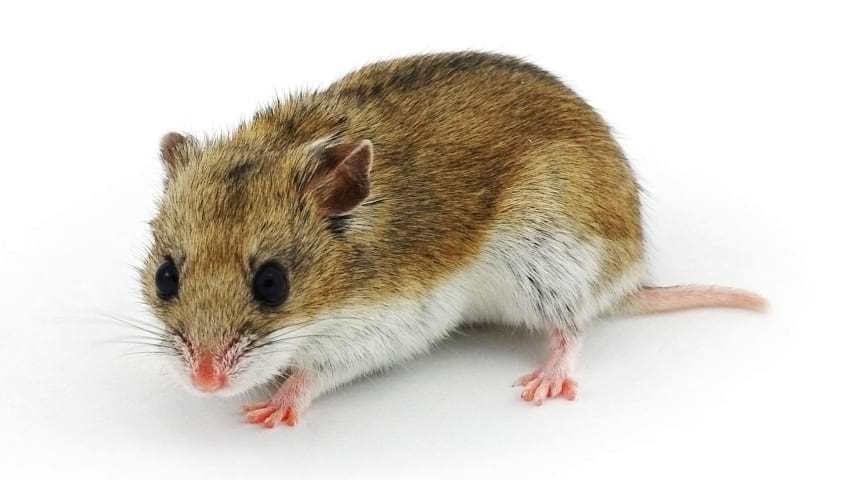
Chinese hamsters are larger than the dwarf (Phodopus genus) hamster species but smaller than Syrians. These little guys measure 3.5 – 5 inches (9-12 cm) in length and weigh around 30-50 grams.
They have a unique appearance that sets them apart from other types of hamsters. Compared to other hamster species, Chinese hamsters have a sleeker, less fluffy appearance and a relatively long and thin tail.
Soft and dense coats of domestic Chinese hamsters come in three colors:
- Wild Type (Agouti)
- Dominant Spot
- Black Eyed White
The most common coloration is wild type/agouti base with a dark stripe running down their back, giving them the name “striped hamsters.” Black-eyed whites are incredibly rare, and only a handful have ever been kept as pets.
Breeding has introduced even more interesting colors and patterns. Some newer variations include white hamsters with full or partial dorsal stripes or even blue ones, which share a similar hue as their sapphire winter white cousins.
Now, if you’re trying to determine the gender of your Chinese dwarf hamster, there’s one physical characteristic you can’t miss. Males have fairly large balls relative to their body size, which makes it easier to identify them.
Chinese Hamster Lifespan
On average, Chinese dwarf hamsters live for around 2-3 years. This lifespan can vary depending on genetics, diet, and living conditions. To increase their chances of living a longer, healthier life, you should pay attention to their needs and address any health concerns promptly.
Now let’s see how you can provide a healthy environment and possibly extend the lifespan of your Chinese hamster:
- Spacious habitat: Ensure your hamster has enough space to explore and play in their cage.
- Balanced diet: Provide a nutritious mixture of dry food mix, fresh vegetables, and protein, such as mealworms and other insects, to keep them fit and strong.
- Exercise: Provide a wheel and other enrichment to encourage your hamster to stay active, avoiding obesity and boredom-related stress.
- Stress-free environment: Minimize loud noises and sudden movements around your hamster’s home, as too much stress can negatively affect their health.
- Timely check-ups: Get your pet to an exotic veterinarian as soon as you notice signs of illness to treat potential health issues early on.
In summary, being mindful of your Chinese hamster’s needs and keeping their environment safe and stimulating will contribute to a longer, happier life for your tiny friend.
Habitat and Housing

Providing your hamster with a comfortable and stimulating environment is essential to keep them occupied and happy. Here are some of the things to consider when welcoming a new pet hamster into your home:
Minimum Cage Size
Animal welfare organizations recommend a cage of at least 775 square inches (5000 cm²) to give your hamster enough space to explore and play. Remember, a larger cage allows for more enrichment and helps prevent boredom.
Unfortunately, small hamster cages sold in most pet stores don’t provide nearly enough space for hamsters to thrive. Despite being tiny, our hamsters need a habitat that caters to their natural instincts, which small cages can’t provide.
We’ve listed some of the best hamster cages here in case you need help in the hamster housing department.
Deep Bedding
Your Chinese hamster needs deep bedding for burrowing, as this mimics their natural behavior in the wild. All hamsters, including Chinese, live in complex underground burrows they create by themselves in the wild.
Digging and burrowing is an essential behavior for them, so it’s important to provide at least 10 inches of bedding. This will allow them to create their own tunnels where they can go to sleep, stash food, and hide, which is crucial for their physical and mental health.
Since hamsters use bedding for burrowing, the material needs to hold tunnels without collapsing. Aspen or paper-based bedding are great choices, as they are safe and hold together structurally.
Mixing more than one type of bedding will provide an even better structure for burrowing. I like a combo of paper-based bedding mixed with safe shavings and hay. This works wonderfully to keep the structures intact.
Sand Bath
Your hamster will need a sand bath for washing up and enrichment. It will help them stay clean while providing another texture to walk on and interact with.
A large but shallow dish with chinchilla bathing sand, heat-treated children’s play sand, or other safe types of sand will do the trick for their grooming needs. Avoid products labeled as “dust” as they’re too fine for a hamster’s sensitive respiratory system, and any sand that is scented or has added minerals.
Exercise

Unlike other pet hamster species, Chinese hamsters are natural climbers thanks to their hairless paws and semi-prehensile tail. To promote this behavior, include climbing enrichment within their habitat, such as platforms, branches, grapevine, and cork tunnels. Ensure these items are stable and not too high, as falls from great heights can be dangerous for your hamster.
A wheel is another must-have item to keep your hamster active. But not just any wheel will do. Your Chinese hamster will need a wheel with a minimum diameter of 10″ inches (25 cm). This will ensure your hamster doesn’t have to arch their back while running, resulting in back injury or pain.
Also, make sure to get a wheel that is solid in material. Mesh wheels and wheels with metal bars can trap your pet’s body parts and cause injury.
Behavior and Temperament
Chinese hamsters are known for their shy and timid nature. When you first get one, you might notice that they often try to avoid contact with humans. However, don’t get discouraged! You can help them become more accustomed to your presence with patience and gentle interaction. In time, they may even learn to come out of their hiding spots for treats.
Chinese dwarf hamsters are nocturnal animals, meaning they’re typically active during the night. They might come out of their burrow a few times a day to eat and drink, but you most likely won’t see much of them during the day. So, if you’re looking for a pet you can interact with throughout the day, a Chinese hamster might not be the best choice for you. However, observing their nighttime antics can be fascinating, and their quiet nature during the day could be a bonus if you don’t want a noisy pet.
While Chinese dwarf hamsters might not be the most cuddly pets out there, they can still make interesting and low-maintenance companions. Remember to be patient, respect their nocturnal lifestyle, and appreciate their unique qualities as you get to know your new furry friend.
Do Chinese Hamsters Bite?
Generally, Chinese hamsters are not aggressive but might nip as a defense mechanism if they feel threatened. As you build trust with your hamster, the chances of getting bitten should decrease.
Are Chinese Hamsters Social?
Chinese hamsters should live on their own as pets as they are naturally solitary animals. In their natural habitat, these hamsters are highly territorial and display aggressive behavior towards other members of their species. Therefore, attempting to keep them together in captivity is likely to result in serious fights and injuries.
Chinese Hamster Diet
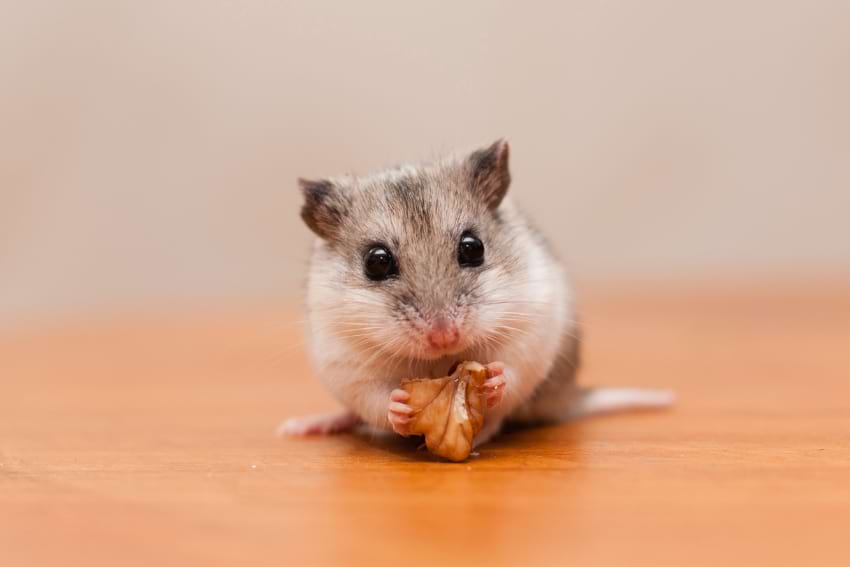
When it comes to feeding your Chinese dwarf hamster, providing a balanced and healthy diet is essential. These little animals are omnivores, which means they eat both plant-based foods and small insects.
Food Mix
The main part of your hamster’s diet is a high-quality hamster food mix. A good one should contain a large variety of grains, seeds, vegetables, legumes, insects, and herbs.
It’s important to remember that all hamster breeds have slightly different nutritional needs. Therefore, look for foods specifically formulated for Chinese hamsters (or at least dwarf hamsters since their diet is more similar to Chinese hamsters than Syrians). You can find some good Chinese hamster food options here.
Vegetables
Don’t forget to supplement your hamster’s diet with fresh vegetables. Offer small amounts of goodies like broccoli, pumpkin, and peas. However, be cautious with the portion sizes, as too much can cause diarrhea.
Chinese hamsters, along with Campbell’s and hybrids, have a genetic predisposition to diabetes. While eating small bits of fruit won’t make them diabetic, consuming sugary foods on a regular basis could increase the risk and push your Chinese hamster into hyperglycemia. Their natural diet in the wild doesn’t include sugary foods as the plants that make them don’t grow on the steppes. So they don’t need fruit in their diet on a regular basis (or at all).
Protein
In addition to fresh vegetables, your Chinese hamster will also appreciate some protein sources like mealworms and other insects. However, these should be given in moderation – no more than a few times a week. Some dry food mixes for hamsters already include insects, covering a hamster’s protein requirements. In that case, your pet won’t need extra protein.
Food Enrichment
As for treats, you can occasionally give them small, unsweetened whole grain cereals or hard dog biscuits such as Whimzees, which will help wear down their ever-growing teeth. Avoid sugary treats and other human food, as they can be harmful to your hamster’s health.
To keep your Chinese dwarf hamster’s diet interesting, you can try offering foods in different forms. For example, sprinkle seeds and foraging plants around their cage or place an insect in a small, homemade foraging toy.
Finally, make sure your hamster always has access to clean, fresh water. A water bowl or bottle with a metal sipper tube can both work well.
Common Health Issues in Chinese Hamsters

Like any other animal, Chinese hamsters have their fair share of potential health issues. Let’s discuss a few common health problems that may affect your Chinese dwarf hamster.
Dental Problems
Dental issues are a common occurrence in hamsters. Overgrown teeth could make eating difficult for them. To prevent this, provide your hamster with chew toys or wooden blocks to gnaw on and naturally maintain the length of their teeth. They should also have good-quality hamster food, which helps maintain their dental health.
Wet Tail
Wet tail is another common health problem, especially among young and stressed hamsters. It is characterized by severe diarrhea, leading to dehydration if not treated promptly. It is a deadly disease, so it’s important to take your hamster to a vet for treatment as soon as possible.
To prevent a wet tail, ensure that your Chinese hamster lives in a clean and stress-free environment. Keep their cage clean and provide a balanced diet.
Respiratory Infections
Respiratory infections can affect your hamster due to several factors, like poor air quality, exposure to cold drafts, or stress. Symptoms of respiratory infection include:
- sneezing,
- wheezing,
- discharge from the eyes or nose.
If you suspect your hamster has a respiratory infection, consult your veterinarian for advice and treatment options.
Skin Issues
Chinese hamsters are prone to skin problems as well. Your hamster might experience a rough hair coat, which is common in Syrians but can also occur in Chinese hamsters. Check for any unusual spots, redness, or itching on their skin, and seek veterinary assistance if necessary.
Remember to watch your hamster and monitor their behavior for any signs of health issues. If you ever feel unsure about their condition or need professional advice, it’s always best to consult your vet.
Where to Get a Chinese Hamster
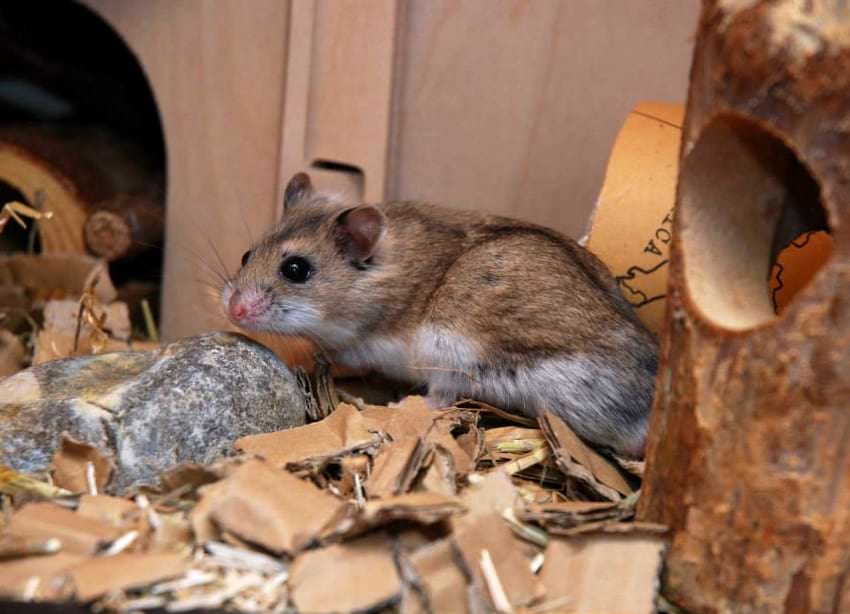
So, you’re interested in adopting a Chinese dwarf hamster? Great choice! They make adorable small pets and can be a real joy to have around. However, these little critters can be harder to find than other pet hamster species.
Here are some sources where you can potentially find your new tiny companion.
Pet Rescue
First, consider checking out pet rescues in your area. By adopting a Chinese hamster from a rescue, you’ll be providing a home to an animal in need. Many pet rescues take in unwanted or abandoned hamsters and strive to find them a loving, forever home. It’s a win-win situation: you get a new pet, and you’re making a difference in an animal’s life.
Private Adoption
Another option is to search for local ads or social media groups where people advertise Chinese hamsters needing a new home. Sometimes, accidental litters happen, and the owners might be searching for responsible pet parents to take in the little ones. By adopting from these groups, you’re not only getting a Chinese hamster but also making space for the current owner to better care for their remaining pets.
Ethical Breeders / Ethical Hamsteries
If you’d like to adopt a healthy Chinese hamster with a known background, you could look for ethical breeders. When searching for a breeder, make sure they prioritize health, temperament, and proper living conditions for their animals. Always visit and ask plenty of questions to ensure the breeder is responsible and knowledgeable.
We don’t recommend adopting from a pet store unless you’ve exhausted all other options. Unfortunately, many pet stores source their animals from rodent mills, which have poor animal welfare standards.
If you can’t find a Chinese hamster from the mentioned sources, consider another hamster species such as Roborovski or Syrian who are just as wonderful as pets.
Ownership Restriction of Chinese Hamsters
Chinese hamsters are considered invasive species in some parts of the USA, including California and Hawaii. These areas share a climate similar to the Chinese hamsters’ natural habitat, which means they could easily survive and reproduce if they were to escape or be released into the wild. Unfortunately, this would have a detrimental impact on native plants and wildlife.
To prevent such ecological harm, owning a Chinese hamster in California requires a permit, and it is banned in Hawaii.
Final Thoughts on Chinese Hamsters
Finally, remember that your Chinese dwarf hamster will require proper housing, food, and care to thrive. Make sure you’re prepared to provide ample time, attention, and resources to meet their needs. With some planning and consideration, you and your new pet can enjoy a happy life together.




